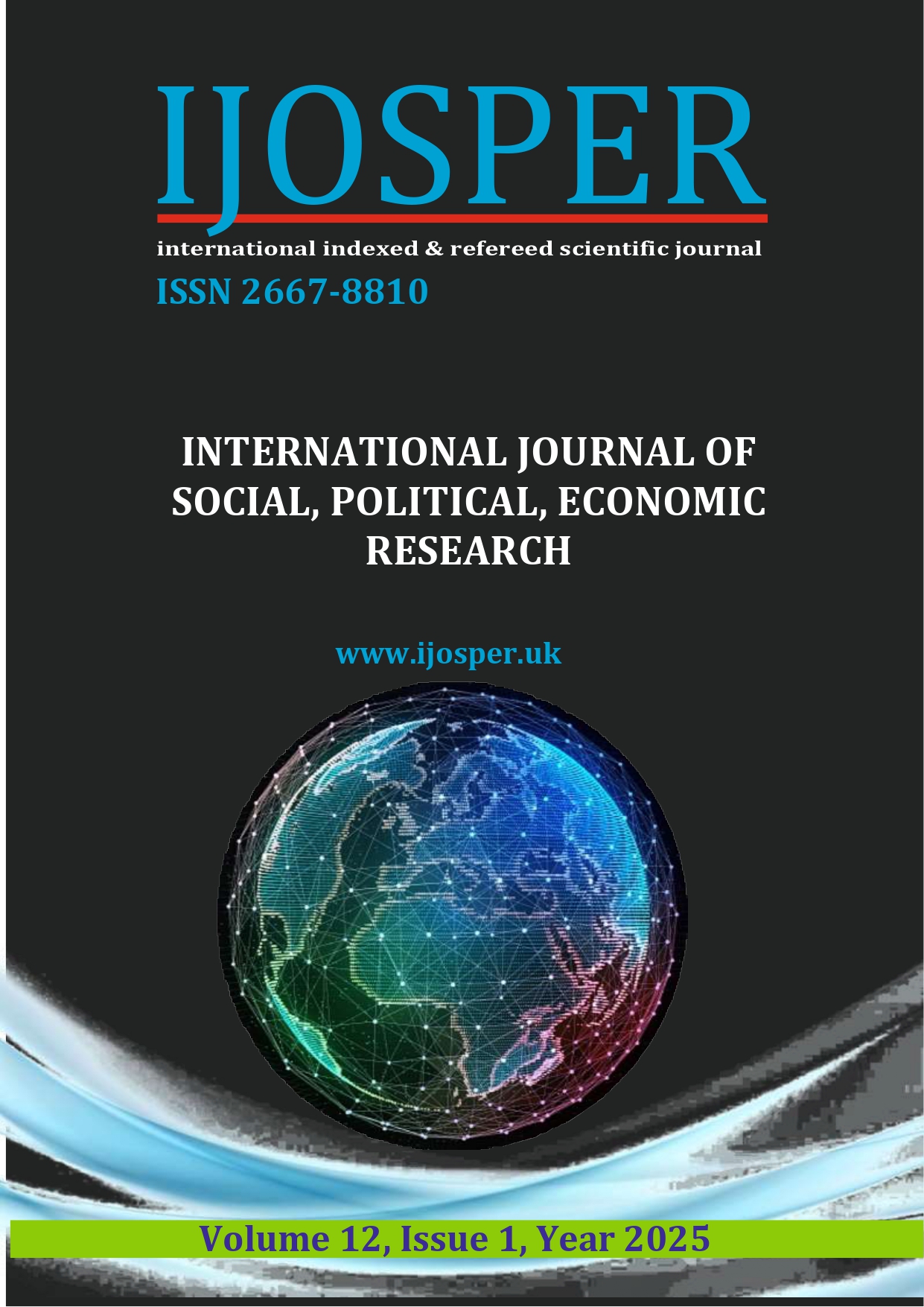Digital Trafficking of Women and Girls in Bangladesh: Legal and Policy Imperatives
DOI:
https://doi.org/10.5281/zenodo.15872775Keywords:
Digital Trafficking, Female Trafficking, Bangladesh, Legal Framework, Policy ReformAbstract
The rise of digital technology has transformed the landscape of human trafficking, enabling traffickers to exploit online platforms for the recruitment, manipulation, and coercion of vulnerable populations. In Bangladesh, women and girls have emerged as primary targets of this evolving form of exploitation, facilitated by social media, messaging apps, and digital grooming tactics. This study investigates the phenomenon of digital trafficking in Bangladesh with a specific focus on the legal and policy responses to these emerging threats. Drawing on secondary data, legal analysis, and documented case studies, the article critically examines the extent to which current laws, such as the Prevention and Suppression of Human Trafficking Act, 2012 and the Cyber Security Act, 2023 adequately address online-facilitated trafficking. Findings reveal substantial limitations in existing legal frameworks, institutional coordination, and digital enforcement capacities. The research argues for urgent legal reform, enhanced digital forensic capabilities, and structured partnerships with technology platforms to combat trafficking in the digital realm. The article concludes with actionable policy recommendations aimed at strengthening the protection of women and girls in cyberspace and ensuring accountability for digital perpetrators.
References
Ahmed, K., & Hölz, V. (2024). Death, abuse and torture: traffickers hold fleeing Rohingya to ransom for up to £3,000 a time. The Guardian. https://www.theguardian.com/global-development/2024/mar/05/death-abuse-and-torture-traffickers-hold-fleeing-rohingya-to-ransom-for-up-to-3000-a-time
Aiyub Kadir, M. Y., Rosmawati, Listriani, S., & Mail, S. M. H. (2024). The Interplay of Human Trafficking and the Rohingya Refugee Crisis in Aceh Province, Indonesia: Exploring the Complexities of Criminality and Humanitarian Concerns. Jurnal IUS Kajian Hukum dan Keadilan, 12(1), 122-145. https://doi.org/10.29303/ius.v12i1.1355
Alam, E., Molla, M. H., Islam, M. K., Rahman, M. A., & Barua, J. (2023). Non-state initiatives on enhancing counter-trafficking of Rohingya influx in Cox's Bazar of Bangladesh [Original Research]. Frontiers in Public Health, p.11. https://doi.org/10.3389/fpubh.2023.1040546
Anam, M. (2021, 10 Jun). TikTok trafficking ring a sign of risky digital spaces. The Daily Star. https://www.thedailystar.net/editorial/news/tiktok-trafficking-ring-sign-risky-digital-spaces-2107885
Azad, A. (2019). Recruitment of Migrant Workers in Bangladesh: Elements of Human Trafficking for Labor Exploitation. Journal of Human Trafficking, 5(2), 130-150. https://doi.org/10.1080/23322705.2017.1422091
Balch, A. (2019). Defeating ‘modern slavery’, reducing exploitation? The organisational and regulatory challenge. In (pp. 75-96). https://doi.org/10.1332/policypress/9781447346791.003.0004
BRAC. (2023). Annual Report. https://www.brac.net/images/downloads/BRAC-Annual-Report-2023-151024.pdf
Care, J. (2023). Joining Forces to End Modern Slavery. https://justiceandcare.org/app/uploads/2024/06/Justice-and-Care-Annual-Report-2022-23.pdf
Chopra, N., & Guharoy, M. R. (2024). Legal Framework Of Human Trafficking. Journal of Scientific Research and Technology, 19-42. https://doi.org/10.61808/jsrt102
Europol. (2020). The challenges of countering human trafficking in the digital era E. O. Directorate. https://www.europol.europa.eu/publications-events/publications/challenges-of-countering-human-trafficking-in-digital-era
Huda, M. N., Hossain, S. Z., Dune, T. M., Amanullah, A. S. M., & Renzaho, A. M. N. (2022). The Involvement of Bangladeshi Girls and Women in Sex Work: Sex Trafficking, Victimhood, and Agency. International Journal of Environmental Research and Public Health, 19(12), pp.1-15. https://www.mdpi.com/1660-4601/19/12/7458
Husain, T. (2024). Cross Border Security Challenges for Bangladesh: A Thematic Analysis. Available at SSRN 4849154. https://doi.org/10.2139/ssrn.4849154
IOM. (2024). World Migration Report 2024. Retrieved 02 June from https://worldmigrationreport.iom.int/msite/wmr-2024-interactive/
Islam, F. (2024). Human Trafficking Law Enforcement Over the Victims and Offenders: The Perspective of Anti-Trafficking Stakeholders. Victims & Offenders, 19(8), 1512-1540. https://doi.org/10.1080/15564886.2023.2227964
Joarder, M. A. M., & Miller, P. W. (2014). The Experiences of Migrants Trafficked from Bangladesh. The ANNALS of the American Academy of Political and Social Science, 653(1), pp.141-161. https://doi.org/10.1177/0002716213518722
Kasper, E., & Chiang, M. (2024). Illuminating the Nature of Systemic Vulnerability to Cross-Border Human Trafficking: the Bangladesh-Malaysia Corridor (Human Resource Consultancy, Issue. https://winrock.org/wp-content/uploads/2024/04/Asia-CTIP-Bangladesh-Systemic-Vulnerability-3.pdf
Khan, A. A. R., Stevens, G. J., Georgeou, N., Bolton, D., & Landells, T. (2024). Culture and Development: The Trauma of the Trafficked Seeking Remittances. In D. Crowther & S. Seifi (Eds.), Society and Sustainability (Vol. 24, pp. 123-151). Emerald Publishing Limited. https://doi.org/10.1108/S2043-052320240000024006
Khan, J. M. (2024). Trapped through TikTok. The Daily Star. https://www.thedailystar.net/news/bangladesh/news/trapped-through-tiktok-3542521
Latonero, M. (2011). Human Trafficking Online: The Role of Social Networking Sites and Online Classifieds. USC Annenberg Center on Communication Leadership & Policy, 56. https://doi.org/10.2139/ssrn.2045851
O’Connell Davidson, J. (2016). De-canting ‘Trafficking in Human Beings’, Re-centring the State. The International Spectator, 51(1), 58-73. https://doi.org/10.1080/03932729.2016.1121685
Reza, A., & Sadat, S. (2024). Modern Slavery and Human Trafficking in Bangladesh: Lessons Learned and Challenges Ahead. Oxford Human Rights Hub. https://ohrh.law.ox.ac.uk/modern-slavery-and-human-trafficking-in-bangladesh-lessons-learned-and-challenges-ahead/
Shamsad Binte, E., & Md. Najmus, S. (2024). Balancing Cybersecurity And Individual Rights: A Critical Analysis Of Bangladesh’s Cyber Security Act 2023. Journal Of Creative Writing (ISSN-2410-6259), 8(1), 81-93. https://doi.org/10.70771/jocw.v8i1.109
State, U. S. D. o. (2023). 2023 Trafficking in Persons Report: Bangladesh. U. S. D. o. State. https://www.state.gov/reports/2023-trafficking-in-persons-report/bangladesh
TBS. (2024, 16 July). Digital boom behind spike in cyber-enabled human trafficking: Experts. The Business Standard. https://www.tbsnews.net/bangladesh/digital-boom-behind-spike-cyber-enabled-human-trafficking-experts-901046
UNODC. (2023). Bangladesh: UNODC launches the Global Report on Trafficking in Persons U. N. O. o. D. a. Crime. https://www.unodc.org/southasia//frontpage/2023/January/bangladesh_-unodc-launches-the-global-report-on-trafficking-in-persons.html
Downloads
Published
How to Cite
Issue
Section
License
Copyright (c) 2025 International Journal of Social, Political and Economic Research

This work is licensed under a Creative Commons Attribution-NonCommercial-NoDerivatives 4.0 International License.






